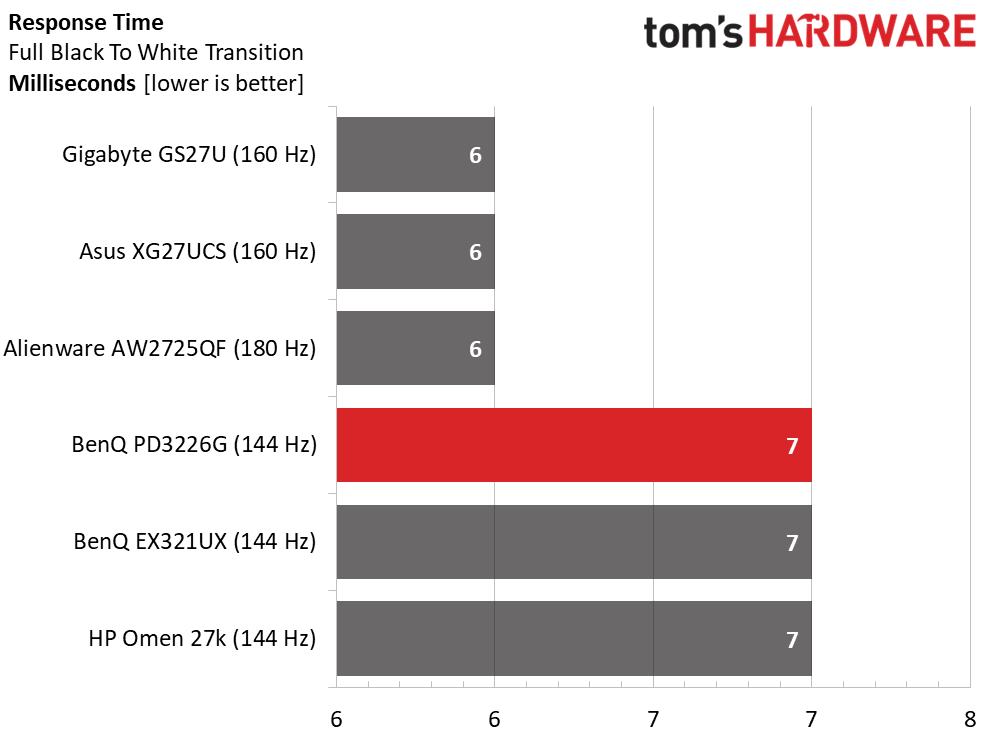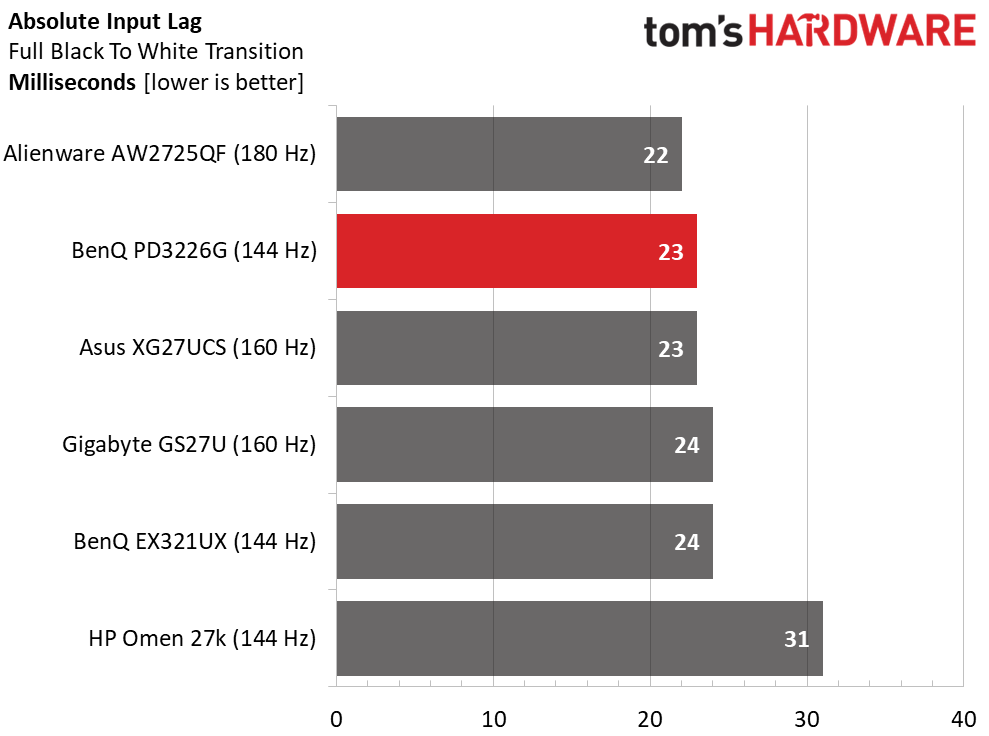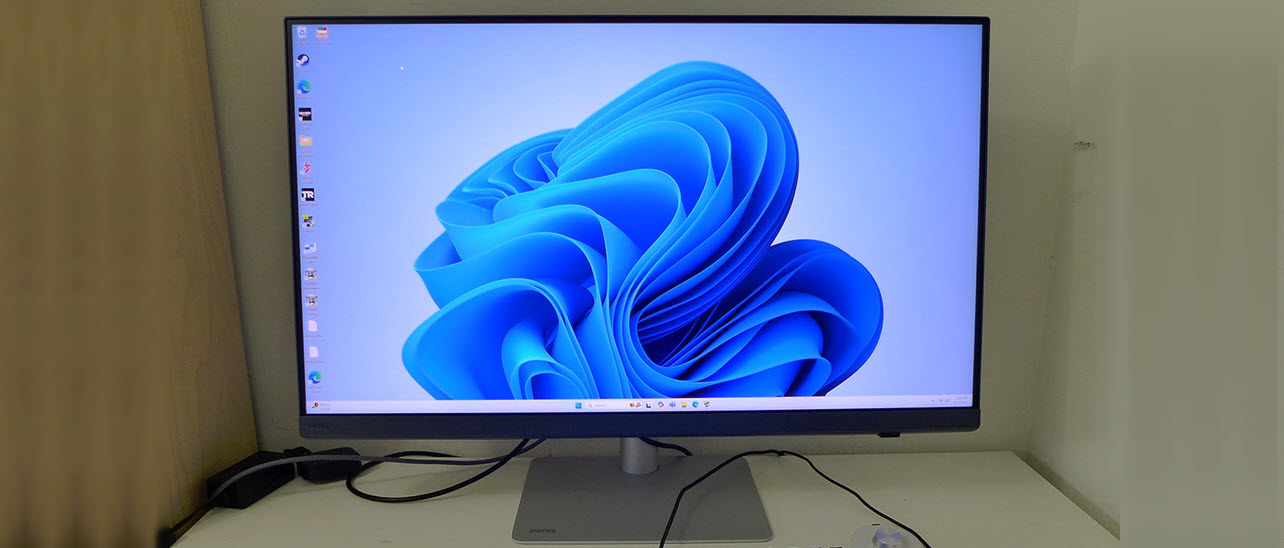Why you can trust Tom's Hardware
With so much focus on OLEDs, I had to go back in time a bit to find five other 4K gaming monitors to compare the PD3226G. They are Gigabyte’s GS27U, Asus’ XG27UCS, Alienware’s AW2725QF, HP’s Omen 27k and BenQ’s EX321UX.
Pixel Response and Input Lag
Click here to read up on our pixel response and input lag testing procedures.


You might think the top three screens are smoother than the PD3226G with their higher refresh rates. But a superb overdrive makes up that 1ms shortfall and delivers some of the smoothest motion resolution I’ve seen from any 4K LCD panel. AMA should be set on High for the best effect. There’s no backlight strobe available, but I didn’t miss it.
Input lag is also lower than I expected. The PD3226G is only 1ms slower than the 180 Hz Alienware, and it equals or beats the two 160 Hz screens. While an OLED is still the best choice for competition, the PD3226G is plenty quick and will satisfy all but the most skilled players.
Test Takeaway: If you’re spoiled by fast OLEDs, the PD3226G won’t make you forget about them. But among 4K LCDs it is one of the quickest and most responsive screens available. Don’t let its 144 Hz refresh rate sway you, motion resolution is excellent thanks to BenQ’s precise overdrive. I have no complaints here.
Viewing Angles

The PD3226G has better off-axis image quality than many IPS panels currently available. To the sides, there is a slight red tint which is much less noticeable in actual content than the more common green error. There is no reduction in gamma or luminance which renders almost no change to those viewing from 45 degrees off center. The top view goes a bit blue with a slight gamma reduction but again, this is better than average.
Screen Uniformity
To learn how we measure screen uniformity, click here.
Get Tom's Hardware's best news and in-depth reviews, straight to your inbox.

I ran this test in User mode with the compensation turned off and saw a slight hotspot in the lower right corner. I couldn’t see it in content, and it was a worthwhile tradeoff to see full contrast with the ability to calibrate. In the fixed color modes, the deviation is closer to 5%. This is average performance among the IPS panels I’ve reviewed.
MORE: Best Gaming Monitors
MORE: How We Test PC Monitors
MORE: How to Buy a PC Monitor
Current page: Response, Input Lag, Viewing Angles and Uniformity
Prev Page Features and Specifications Next Page Brightness and Contrast
Christian Eberle is a Contributing Editor for Tom's Hardware US. He's a veteran reviewer of A/V equipment, specializing in monitors. Christian began his obsession with tech when he built his first PC in 1991, a 286 running DOS 3.0 at a blazing 12MHz. In 2006, he undertook training from the Imaging Science Foundation in video calibration and testing and thus started a passion for precise imaging that persists to this day. He is also a professional musician with a degree from the New England Conservatory as a classical bassoonist which he used to good effect as a performer with the West Point Army Band from 1987 to 2013. He enjoys watching movies and listening to high-end audio in his custom-built home theater and can be seen riding trails near his home on a race-ready ICE VTX recumbent trike. Christian enjoys the endless summer in Florida where he lives with his wife and Chihuahua and plays with orchestras around the state.
